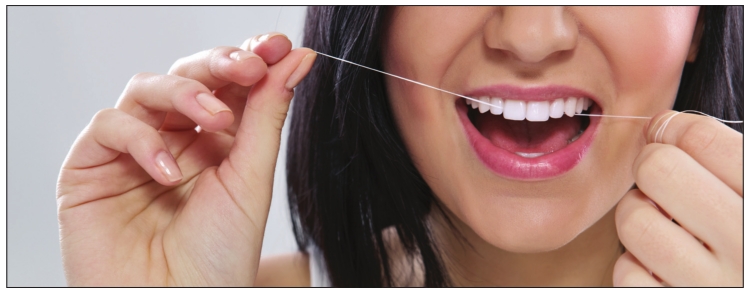
“Don’t forget to floss!” An instruction heard from every dentist one has ever visited, that age-old saying holds greater meaning as the years go on.
Maintaining dental health after 40 can be an easy ride or an uphill battle, depending on the lifestyle and previous dental care you might have chosen. Dr. Peyton W. Cunningham explained why sometimes getting older can lead to poor dental habits.
“We become lackadaisical in a sense that we don’t brush and fl oss like we should,” Cunningham said. “We pick up bad habits like going toward sweets, which we need to avoid, and [other bad habits] like cigarette smoking and chewing tobacco and any form of soda pop.
“The problem is that any form of soda pop has acid in it, very strong acids which deteriorate teeth,” Cunningham continued.
“And unless you get the acid off your teeth by either swishing with water or picking up a toothbrush to neutralize the acid, you’ll have that acid on your teeth for an extended period of time.”
Cunningham said the worst cases he sees are the people who consistently drink sugar-fi lled beverages such as sodas. He said much like with other health aspects, dental care can sometimes become a task as the years go by.
“As we get older, the body’s capacity to heal itself decreases,” he said.
Cigarette smoking and chewing tobacco are a big concern for maintaining dental health.
“The heart pumps about a half gallon of blood to the jaws a minute,” Cunningham said. “What happens when you smoke a cigarette is the nicotine in the cigarette causes the blood vessels to shrink; therefore, you get less blood to the jaws; and you have less oxygen, less fl uid and less clean up cells to take away cellular debris.”
One of the more serious issues that can arise from improper dental care in someone’s later years is periodontal disease.
Dr. Michael Woolbert said the majority of tooth loss in adulthood is because of this disease, and that’s important to keep up with regular visits in order to catch it in early stages.
“The mildest form of periodontal disease is gingivitis, where your gums are red, infl amed and bleed a little bit,” Woolbert said.
“Treatment can range from what we call scaling and root planing, which is when we get in there and remove anything that might be attached to the tooth below the gum line, to periodontal surgery, which is a bit more involved and usually done by a periodontist specialist.”
Woolbert said catching periodontal disease early can save plenty of hassle because letting the issue get worse can be problematic.
“There’s an area where the gums are just laid against the tooth, they’re not attached and there is a potential space; that’s where the popcorn kernel gets stuck,” Woolbert said. We measure that space [and] anything from zero to three millimeters is what we’re happy with. What happens is stuff gets in that pocket and attaches to your tooth, and your body’s response to that is infl ammation. Your gums get red and bleed, but we clean it off, and it gets healthy. But if it sits too long, the infl ammatory response attacks the ligament and bone and you end up with a space deeper. At 5 millimeters, we start talking about treatment, but if you’re [worse than 5 millimeters], you’ll probably go to the periodontist. The problem is, once you’ve lost the bone, you usually don’t get it back.”
Woolbert suggests chewing sugar-free gum after drinking sodas or eating sweets, if you are unable to brush your teeth at the moment.
“Sugar-free gum will stimulate saliva, which helps clean food away and fi ght decay,” Woolbert said. “The saliva helps buffer and correct the drop in pH from the acid.”
Patients over 40 also might experience tooth fracture from silver fi llings they’ve had for quite some time, as that method has been phased out and now been replaced by white-coated bonding. Peyton Cunningham said the reason the teeth might break or fracture is because the varying temperatures of hot and cold drinks consumed over a period of time can cause the fi lling to expand and shrink at different rates.
“It typically can break teeth and sometimes you have to restore the tooth with a crown, and sometimes it’s non-savable and you have to put in a dental implant,” Cunningham said.
Ultimately, the best dental care plan is to be proactive.
“Prevention is the best medicine, and prevention saves you a lot of money,” Cunningham said. “I think if you do things to properly clean your teeth and keep the acids out of your mouth – wear a bite guard to prevent clenching or thrusting, stop cigarette smoke and tobacco – [you won’t be as likely to need extra dental care outside of your normal regular visits].”
– Katie Ho